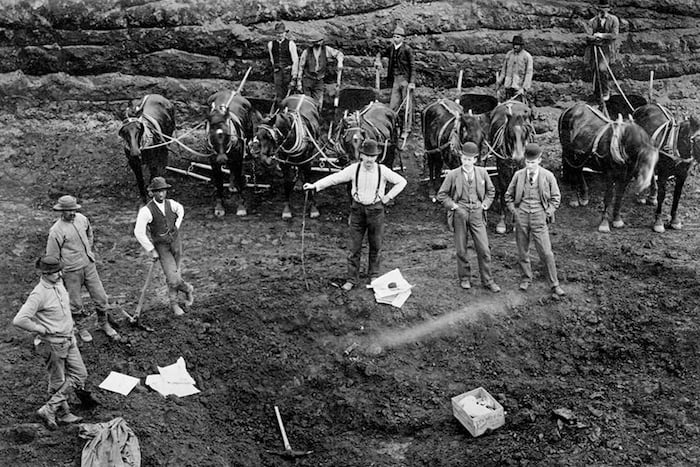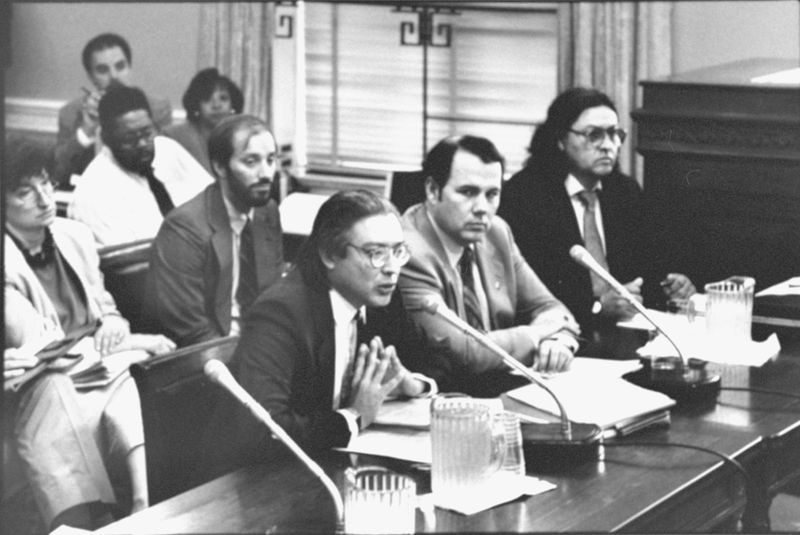Alabama
Institutions reported making 86% of the more than 24,000 Native American remains taken from Alabama available for return to tribes under NAGPRA.
There are 14 institutions located in Alabama that reported Native American remains taken from across the country.
| Institution | Remains Not Made Available for Return | Remains Made Available for Return | % of Remains Made Available for Return |
|---|---|---|---|
| University of Alabama Museums | 2,732 | 10,746 | 80% |
| Auburn University | 762 | 7 | 1% |
| U.S. Department of Defense | 228 | 215 | 49% |
| University of South Alabama, Center for Archaeological Studies | 60 | 9 | 13% |
| Anniston Museum of Natural History | 39 | 2 | 5% |
| Auburn Univ. at Montgomery | 15 | 0 | 0% |
| McWane Science Center | 2 | 1 | 33% |
| U.S. Department of the Interior | 2 | 25 | 93% |
| University of Alabama, Birmingham | 1 | 0 | 0% |
| Alabama Department of Archives & History | 0 | 115 | 100% |
| Alabama Department of Transportation | 0 | 45 | 100% |
| Birmingham Museum of Art | 0 | 2 | 100% |
| Florence Indian Mound Museum | 0 | 1 | 100% |
| Jacksonville State University | 0 | 21 | 100% |
There are 32 institutions that reported Native American remains taken from Alabama.
| Institution | Remains Not Made Available for Return | Remains Made Available for Return | % of Remains Made Available for Return |
|---|---|---|---|
| University of Alabama Museums | 2,413 | 10,746 | 82% |
| Auburn University | 760 | 7 | 1% |
| University of South Alabama, Center for Archaeological Studies | 56 | 9 | 14% |
| Anniston Museum of Natural History | 38 | 2 | 5% |
| Auburn Univ. at Montgomery | 15 | 0 | 0% |
| Columbus Museum | 4 | 68 | 94% |
| University of Georgia, Department of Anthropology | 4 | 0 | 0% |
| University of Louisiana at Monroe | 3 | 0 | 0% |
| University of Pennsylvania Museum of Archaeology and Anthropology | 3 | 3 | 50% |
| Robert S. Peabody Institute of Archaeology, Phillips Academy | 2 | 1 | 33% |
| U.S. Department of Defense | 2 | 59 | 97% |
| U.S. Department of the Interior | 2 | 41 | 95% |
| Florida State University, Department of Anthropology | 1 | 0 | 0% |
| University of Alabama, Birmingham | 1 | 0 | 0% |
| Alabama Department of Archives & History | 0 | 115 | 100% |
| Alabama Department of Transportation | 0 | 45 | 100% |
| Birmingham Museum of Art | 0 | 2 | 100% |
| Bruce Museum | 0 | 1 | 100% |
| Columbus State University | 0 | 28 | 100% |
| Florence Indian Mound Museum | 0 | 1 | 100% |
| Gilcrease Museum | 0 | 40 | 100% |
| Harvard University | 0 | 3 | 100% |
| Jacksonville State University | 0 | 21 | 100% |
| Museum of Us | 0 | 1 | 100% |
| Tennessee Valley Authority | 0 | 9,028 | 100% |
| University of California, San Diego | 0 | 478 | 100% |
| University of Denver, Museum of Anthropology | 0 | 2 | 100% |
| University of Memphis | 0 | 5 | 100% |
| University of Michigan Museum of Anthropology | 0 | 1 | 100% |
| University of Oklahoma | 0 | 1 | 100% |
| University of Tennessee, Knoxville | 0 | 6 | 100% |
| Yale University, Peabody Museum of Natural History | 0 | 1 | 100% |
Institutions made Native American remains taken from Alabama available for return to 22 tribes.
| Tribe | Remains Made Available for Return to Tribe |
|---|---|
| Chickasaw Nation | 18,230 |
| Muscogee (Creek) Nation | 13,977 |
| Alabama-Coushatta Tribe of Texas | 13,156 |
| Coushatta Tribe of Louisiana | 13,088 |
| Alabama-Quassarte Tribal Town, Oklahoma | 12,454 |
| The Seminole Nation of Oklahoma | 11,784 |
| Jena Band of Choctaw Indians | 11,588 |
| Choctaw Nation of Oklahoma | 11,578 |
| Seminole Tribe of Florida | 11,059 |
| Eastern Band of Cherokee Indians | 2,233 |
| Cherokee Nation | 2,228 |
| United Keetoowah Band of Cherokee Indians in Oklahoma | 2,161 |
| Thlopthlocco Tribal Town | 1,922 |
| Poarch Band of Creek Indians | 1,443 |
| Kialegee Tribal Town | 964 |
| Absentee-Shawnee Tribe of Indians of Oklahoma | 781 |
| Eastern Shawnee Tribe of Oklahoma | 781 |
| Shawnee Tribe | 781 |
| Miccosukee Tribe of Indians | 282 |
| Mississippi Band of Choctaw Indians | 149 |
| Chitimacha Tribe of Louisiana | 7 |
| Tunica-Biloxi Indian Tribe | 7 |
Institutions reported Native American remains taken from 43 counties in Alabama.
| County | Remains Taken From County Not Made Available for Return | Remains Made Available for Return | % of Remains Made Available for Return |
|---|---|---|---|
| Marshall County | 1,535 | 1,118 | 42% |
| Elmore County | 765 | 20 | 3% |
| St. Clair County | 356 | 18 | 5% |
| Jackson County | 173 | 685 | 80% |
| Mobile County | 74 | 3 | 4% |
| Jefferson County | 64 | 0 | 0% |
| Clarke County | 45 | 5 | 10% |
| Calhoun County | 44 | 12 | 21% |
| Baldwin County | 41 | 14 | 25% |
| Talladega County | 39 | 15 | 28% |
| Cherokee County | 30 | 38 | 56% |
| Washington County | 21 | 1 | 5% |
| Perry County | 17 | 0 | 0% |
| Walker County | 16 | 18 | 53% |
| Dallas County | 15 | 2 | 12% |
| Madison County | 10 | 582 | 98% |
| Morgan County | 10 | 655 | 98% |
| Bibb County | 9 | 0 | 0% |
| Russell County | 7 | 117 | 94% |
| Montgomery County | 6 | 34 | 85% |
| Macon County | 3 | 1 | 25% |
| Sumter County | 3 | 0 | 0% |
| Wilcox County | 3 | 3 | 50% |
| Randolph County | 2 | 0 | 0% |
| Barbour County | 1 | 0 | 0% |
| Covington County | 1 | 1 | 50% |
| Franklin County | 1 | 1,365 | 100% |
| Henry County | 1 | 0 | 0% |
| Lamar County | 1 | 2 | 67% |
| Limestone County | 1 | 125 | 99% |
| Monroe County | 1 | 0 | 0% |
| Blount County | 0 | 1 | 100% |
| Colbert County | 0 | 911 | 100% |
| Cullman County | 0 | 2 | 100% |
| DeKalb County | 0 | 1 | 100% |
| Etowah County | 0 | 18 | 100% |
| Hale County | 0 | 85 | 100% |
| Lauderdale County | 0 | 3,787 | 100% |
| Lawrence County | 0 | 296 | 100% |
| Lee County | 0 | 1 | 100% |
| Lowndes County | 0 | 31 | 100% |
| Tuscaloosa County | 0 | 10,701 | 100% |
| Winston County | 0 | 1 | 100% |
Know how an institution is handling repatriation? Have a personal story to share? We'd like to hear from you.
Watch an informational webinar with our reporters.
This tool presents a dataset maintained by the National Park Service containing all the Native American human remains and associated funerary objects that institutions have reported to the federal government under the Native American Graves Protection and Repatriation Act. The dataset includes information about the state and county where remains and objects were taken from, which institutions hold them and whether they have been made available for return to tribes.
The data is self-reported by institutions. The amount of unrepatriated Native American remains reported by institutions is a minimum estimate of individuals and institutions frequently adjust these numbers when they reinventory groups of remains. Some institutions that are subject to NAGPRA have also entirely failed to report the remains in their possession. As a result, the numbers provided are best taken as estimates. The actual number and geographic scope of what’s held by publicly funded institutions is larger than what is presently documented.
ProPublica supplemented this dataset with information about cultural affiliation and disposition to specific tribes by systematically parsing the text of Notices of Inventory Completion published in the Federal Register. An additional dataset from the Department of Housing and Urban Development, the Tribal Directory Assessment Tool, was used for the section on remains not made available for return from counties that each tribe has indicated interest in to the federal government.
Institution location and tribal headquarters location information was provided by National NAGPRA. The location of some groups that are not federally recognized was provided through research by ProPublica.
Institutions that are part of a larger entity are grouped. (For example, the Mesa Verde National Park is part of the U.S. Department of the Interior.)
Institutions that have not submitted information to the federal government are not listed. The Smithsonian Institution is not listed because its repatriation process falls under the National Museum of the American Indian Act and it is not required to publicly report its holdings with the same detail as institutions subject to NAGPRA.
If you work for an institution and would like to provide comment on your institution’s repatriation efforts, please email [email protected]. If you think the data is incorrect or have a data request, please get in touch. We are aware of some issues with the accuracy of location information and tribes mistakenly being identified for disposition of Native American remains in published notices.
If you want to share something else with ProPublica, we’d like to hear from you.
If you have questions about implementing or complying with the Native American Graves Protection and Repatriation Act, get in touch with National NAGPRA or the NAGPRA Community of Practice.
We use the word “tribes” to refer to all groups that institutions made Native American remains available to under NAGPRA. This includes tribes, nations, bands, pueblos, communities, Native Alaskan villages, Native Hawaiian organizations and non-federally recognized groups.
Data sources from Department of the Interior, National Park Service, National NAGPRA Program, the Federal Register, Department of Housing and Development, Tribal Directory Assessment Tool


